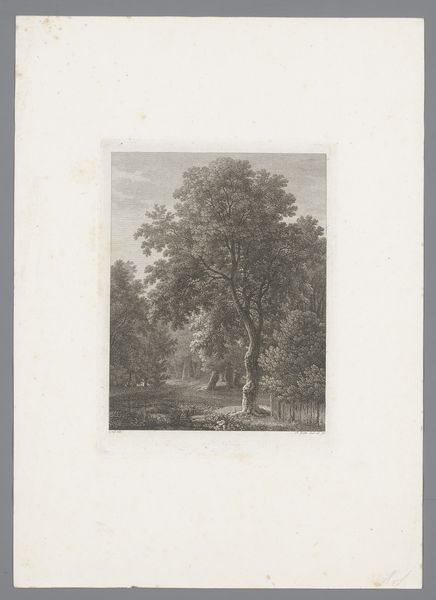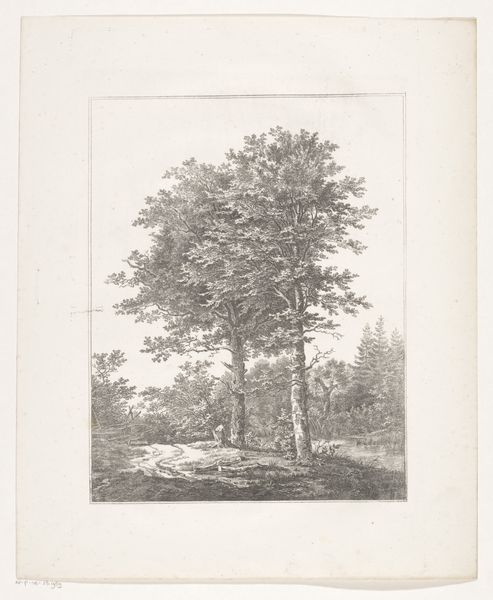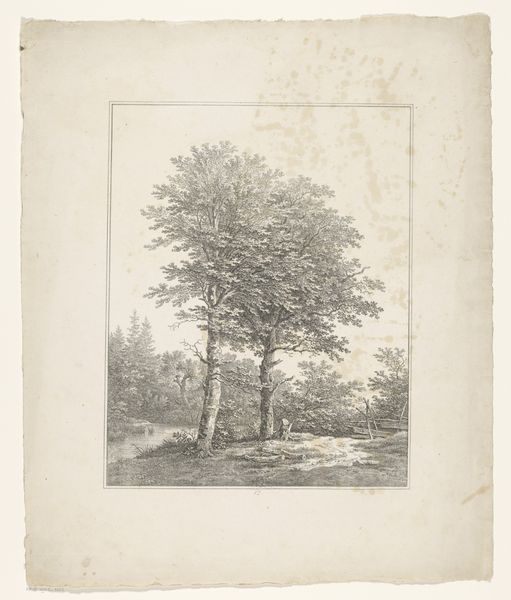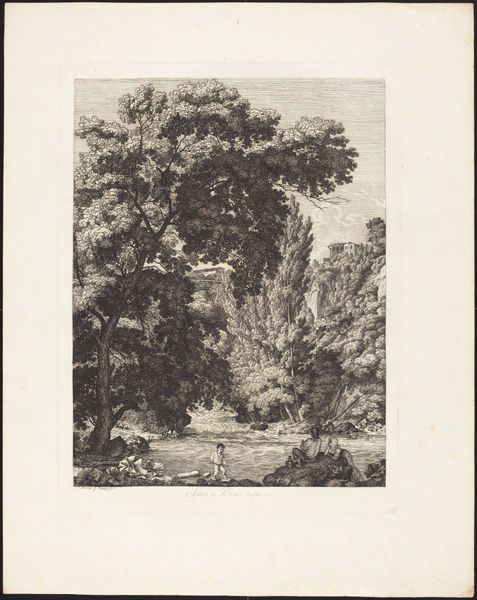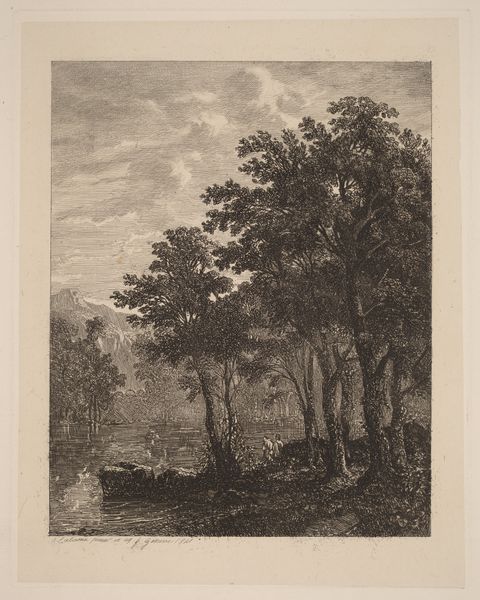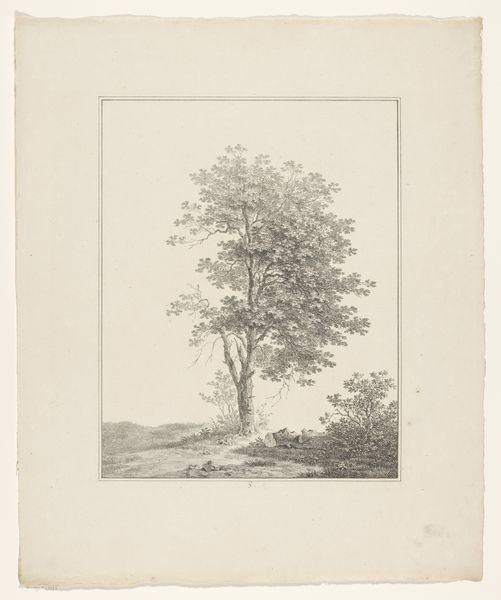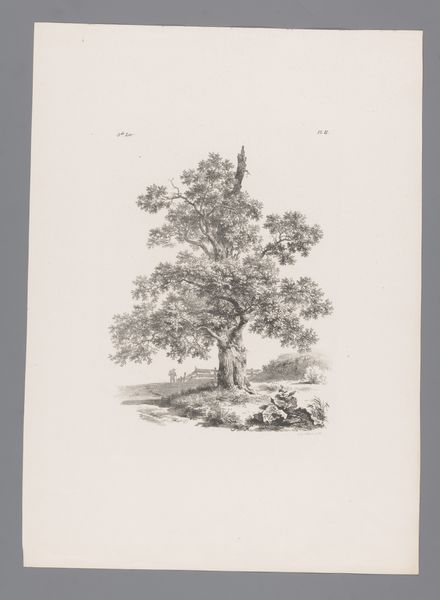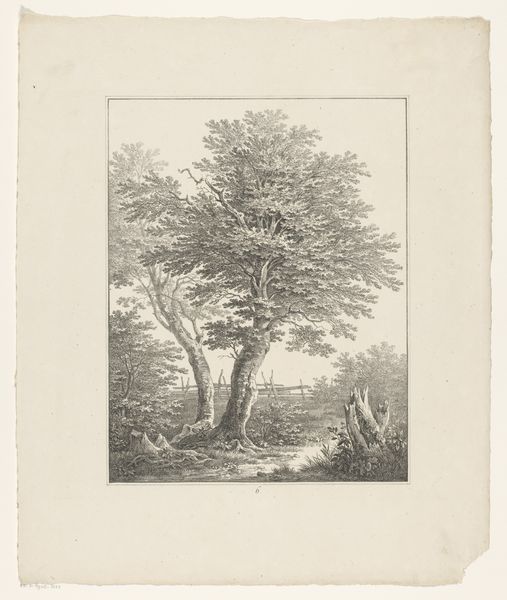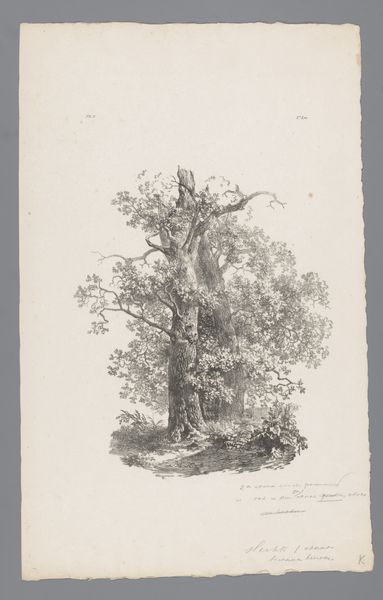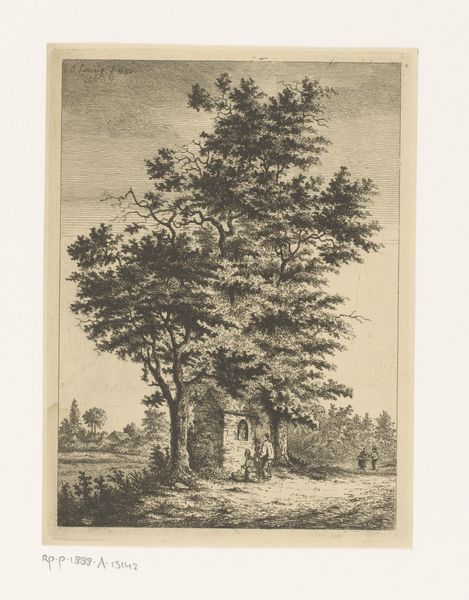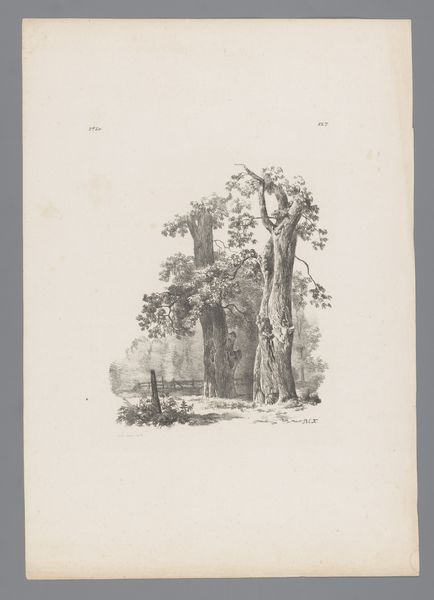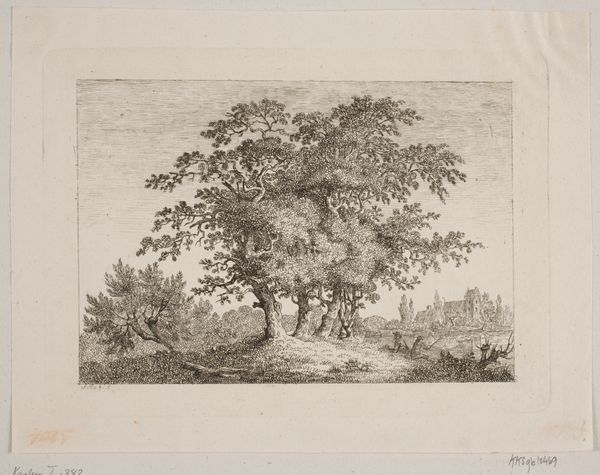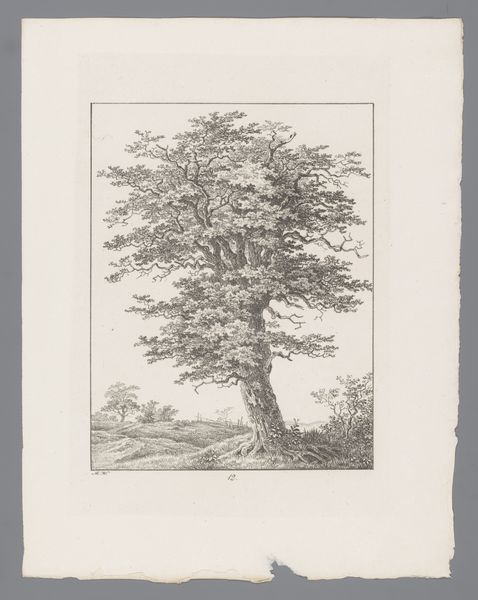
drawing, print, etching, ink
#
pen and ink
#
drawing
#
ink drawing
# print
#
etching
#
landscape
#
ink
#
romanticism
Dimensions: plate: 36.5 x 27.5 cm (14 3/8 x 10 13/16 in.) sheet: 39.1 x 49.2 cm (15 3/8 x 19 3/8 in.)
Copyright: National Gallery of Art: CC0 1.0
Curator: Welcome. Today, we are looking at "Castella Gandolfo," an etching and ink drawing by Jacob Wilhelm Mechau, created in 1792. Editor: It's beautiful, this scene. It evokes such a serene and peaceful feeling. There's a sort of quiet grandeur, despite being monochromatic and employing primarily thin, wispy lines to shape the overall composition. Curator: Mechau, who worked in the late 18th century, captured in great detail a picturesque landscape outside of Rome, which became a favorite subject during the period, echoing the aesthetics of the Grand Tour, but here it also feels particularly embedded in emergent Romanticism. Notice the meticulous etching of foliage contrasting with the architectural element. Editor: Yes, and that placement really reinforces the contrast between the natural and the constructed. You have figures leisurely resting beneath grand trees in the foreground, drawing a subtle parallel between nature and ordinary lives with a monumental construction, just visible, looming in the background. This arrangement creates a complex interplay of human interaction and institutional influence in relation to the landscape. Curator: I think you have something there. The artist emphasizes nature and a simple life, maybe pointing toward a certain dissatisfaction with larger sociopolitical forces or at least demonstrating a different hierarchy of values for his time. Castella Gandolfo, as represented here, takes on an allegorical dimension. Editor: I'm drawn to consider it through the lens of accessibility, too. Who had access to spaces like this? This rendering feels as if it presents an idealized world from an individualistic perspective—a world shaped, nonetheless, by class and power. In other words, it romanticizes the location without critiquing the power structure which it, knowingly or unknowingly, reifies. Curator: I appreciate you bringing that point. When considering landscapes as historical records, the perspective becomes so crucial. Mechau was part of a broader art world catering to particular patrons. So, what we interpret now has a relationship to those initial intentions and conditions of viewership. Editor: It definitely makes you think. All things considered, the rendering, I find, evokes a simultaneous longing and subtle critique of existing societal orders. Curator: Well, perhaps it is precisely that ambivalence that makes it so fascinating still. Editor: Indeed. It gives us much to consider today.
Comments
No comments
Be the first to comment and join the conversation on the ultimate creative platform.
